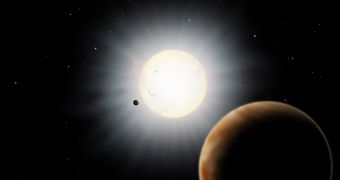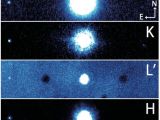The mystery of an exoplanet that has been giving astronomers a hard time has been explained, or at least some big pieces of the puzzle have been discovered.
HAT-P-7b, orbiting around the HAT-P-7 star some 1070 light years away, had an unusual retrograde orbit around its parent star, it circled it in the direction opposite to the star's spin.
There's no planet in the solar system like this, but a few exoplanets with retrograde orbits have been found.
Explaining them is the hard part, what we know about how star systems are formed doesn't allow for planets to move counter to the star's spin.
However, astronomers now believe they have an explanation for the strange orbit of HAT-P-7b since they've discovered a companion star and another exoplanet circling the original star, using the National Astronomical Observatory of Japan's Subaru Telescope.
The companion star, HAT-P-7B, is much smaller than HAT-P-7, which in turn is almost twice as big as the sun.
The newly found planet, HAT-P-7c, orbits the main star between the orbit of HAT-P-7b and HAT-P-7B. The smaller star affected the orbit of the newly found planet until it, in turn, affected the inner HAT-P-7b eventually turning HAT-P-7b all the way around putting it into its retrograde orbit.

 14 DAY TRIAL //
14 DAY TRIAL // 
